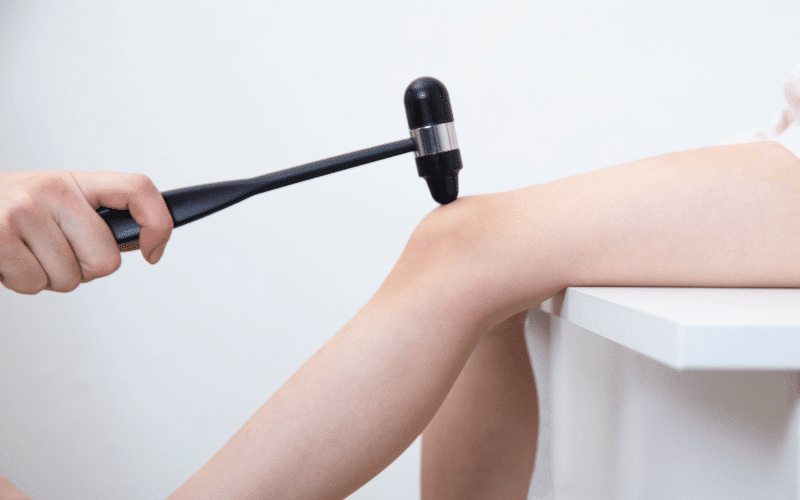Symptom 7: Abnormal Reflexes – Unveiling the Unusual

In the journey of deciphering PLS, abnormal reflexes emerge as a clear marker of neural dysfunction. Initially subtle, their manifestation may go unnoticed by the patients themselves. However, they are an essential tool for clinicians in identifying this neurological condition.
Reflexes are spontaneous, programmed responses to specific stimuli, wired into our neural circuitry as safeguard mechanisms. When these reflexes start acting out, they can indicate a deeper neurological issue, such as PLS.
Abnormal reflexes in PLS often present as hyperreflexia, where the body overreacts to stimuli, causing exaggerated reflex responses. This abnormality is a key diagnostic pointer towards PLS, indicating damage to the upper motor neurons, the primary sites affected by this condition.
Besides hyperreflexia, PLS patients may also exhibit the Babinski sign, an unusual reflex seen in neurological conditions. Normally, stroking the sole of the foot causes the toes to curl inward. However, in PLS patients, the big toe extends upward while the other toes fan out – a clear deviation from the norm.
Though seemingly innocuous, the role of abnormal reflexes in diagnosing PLS is pivotal. They provide essential insights into the type of motor neuron degeneration – crucial in PLS, as it primarily affects the upper motor neurons. Coupled with other clinical signs, they contribute to a more precise PLS diagnosis.
While there’s no known cure for PLS, the symptoms, including abnormal reflexes, can be managed with medication and therapy. A holistic approach focusing on the overall well-being of the patient can help in maintaining an optimal quality of life amidst the challenges posed by PLS. (7)